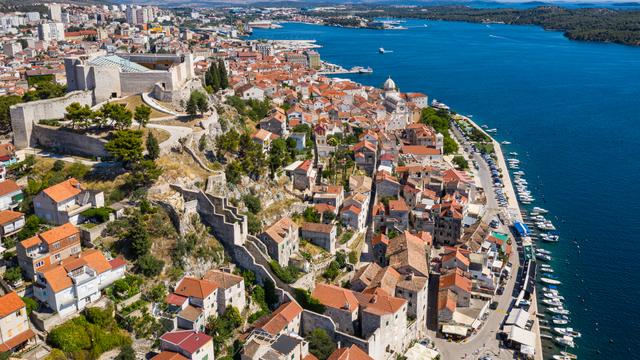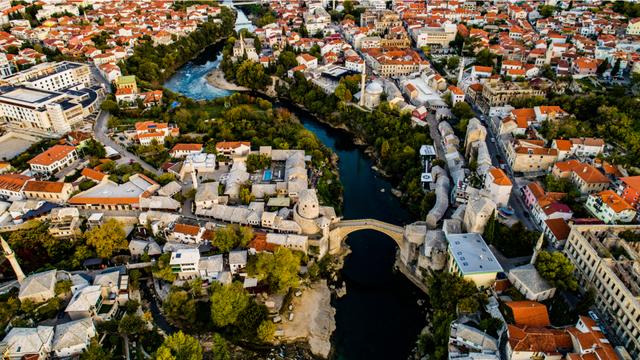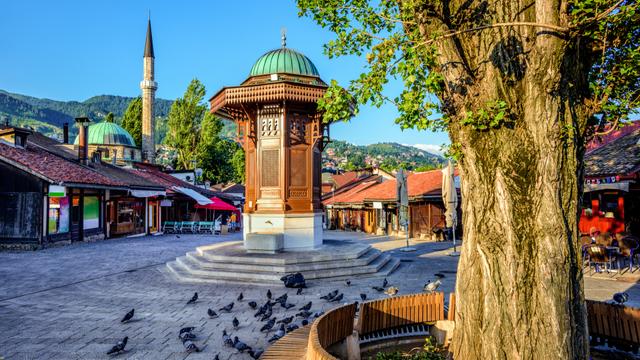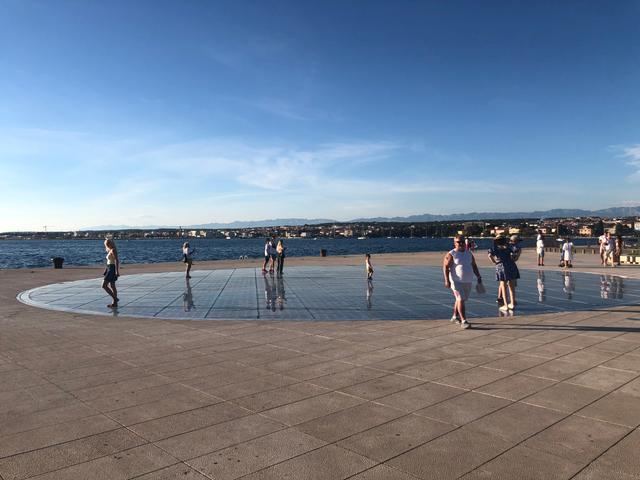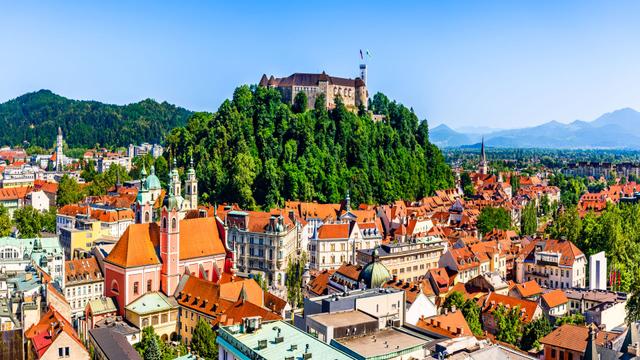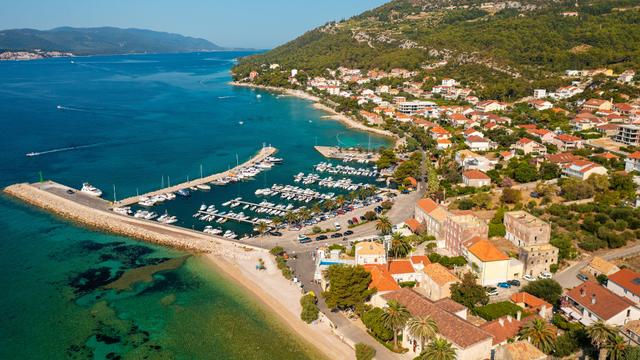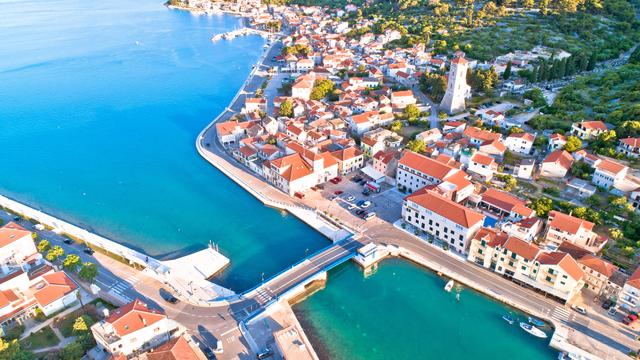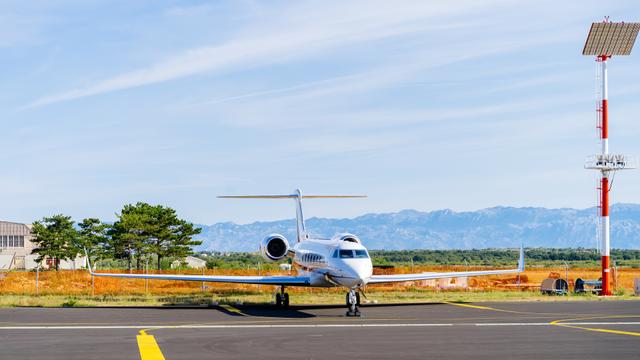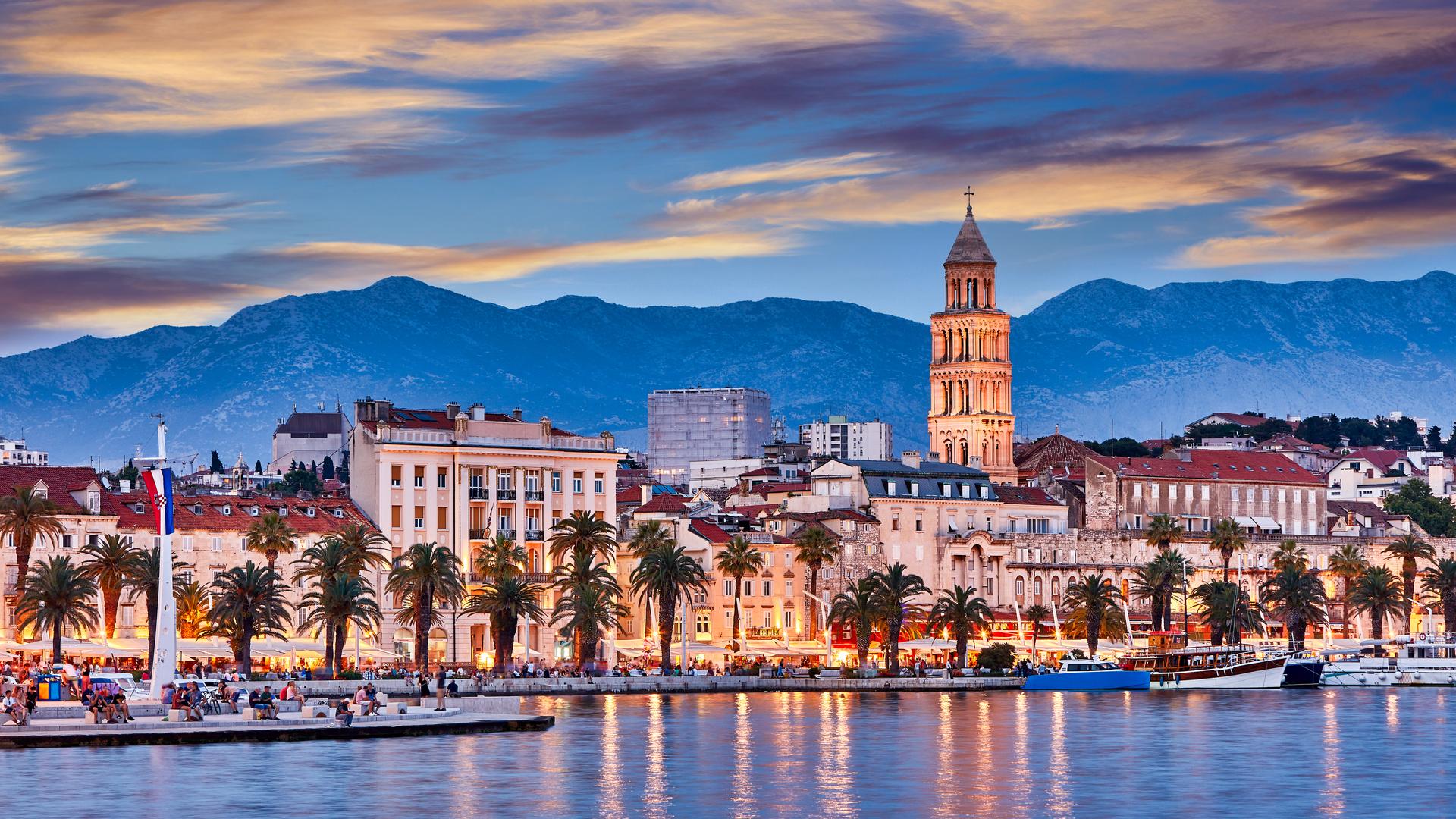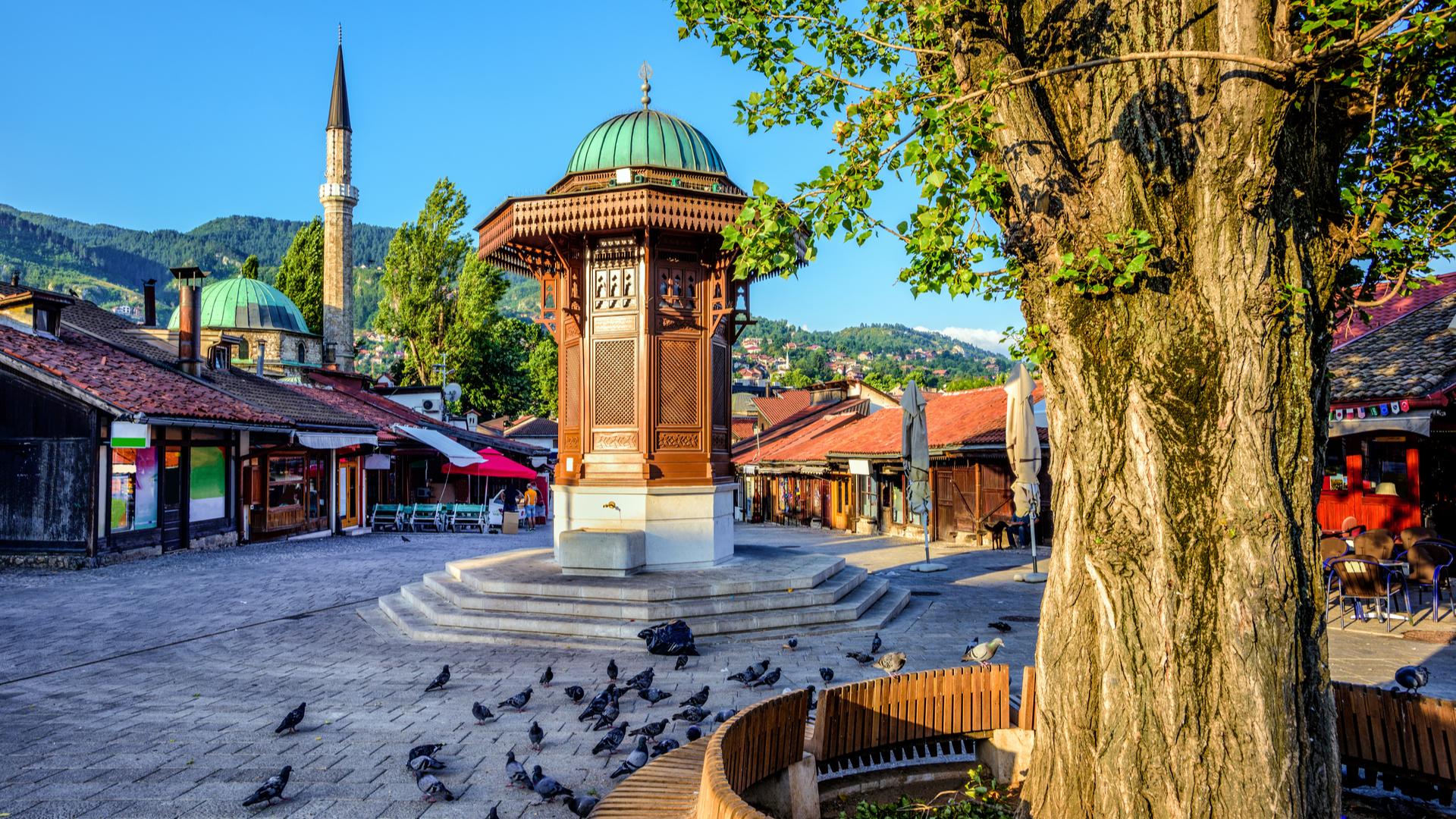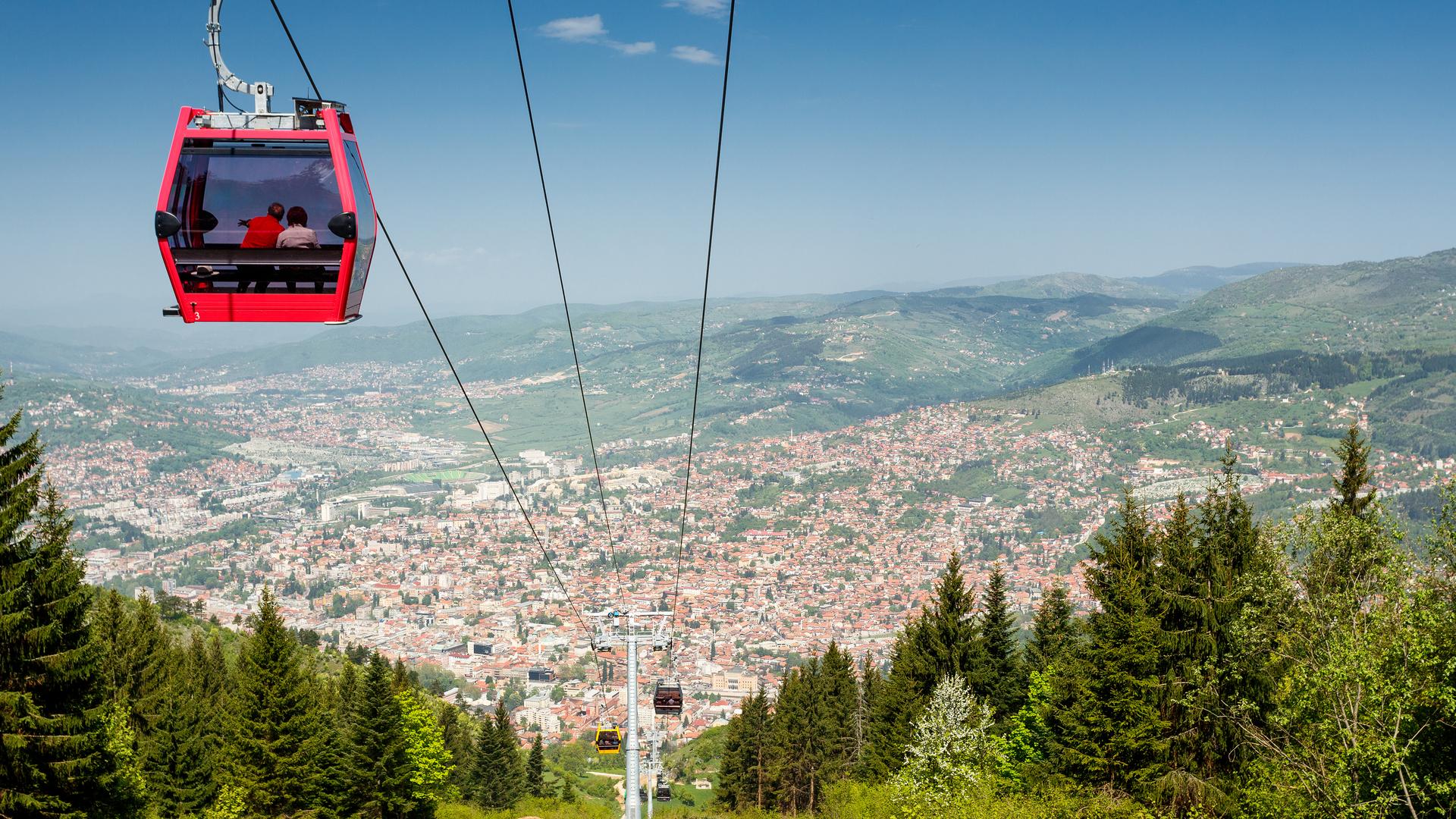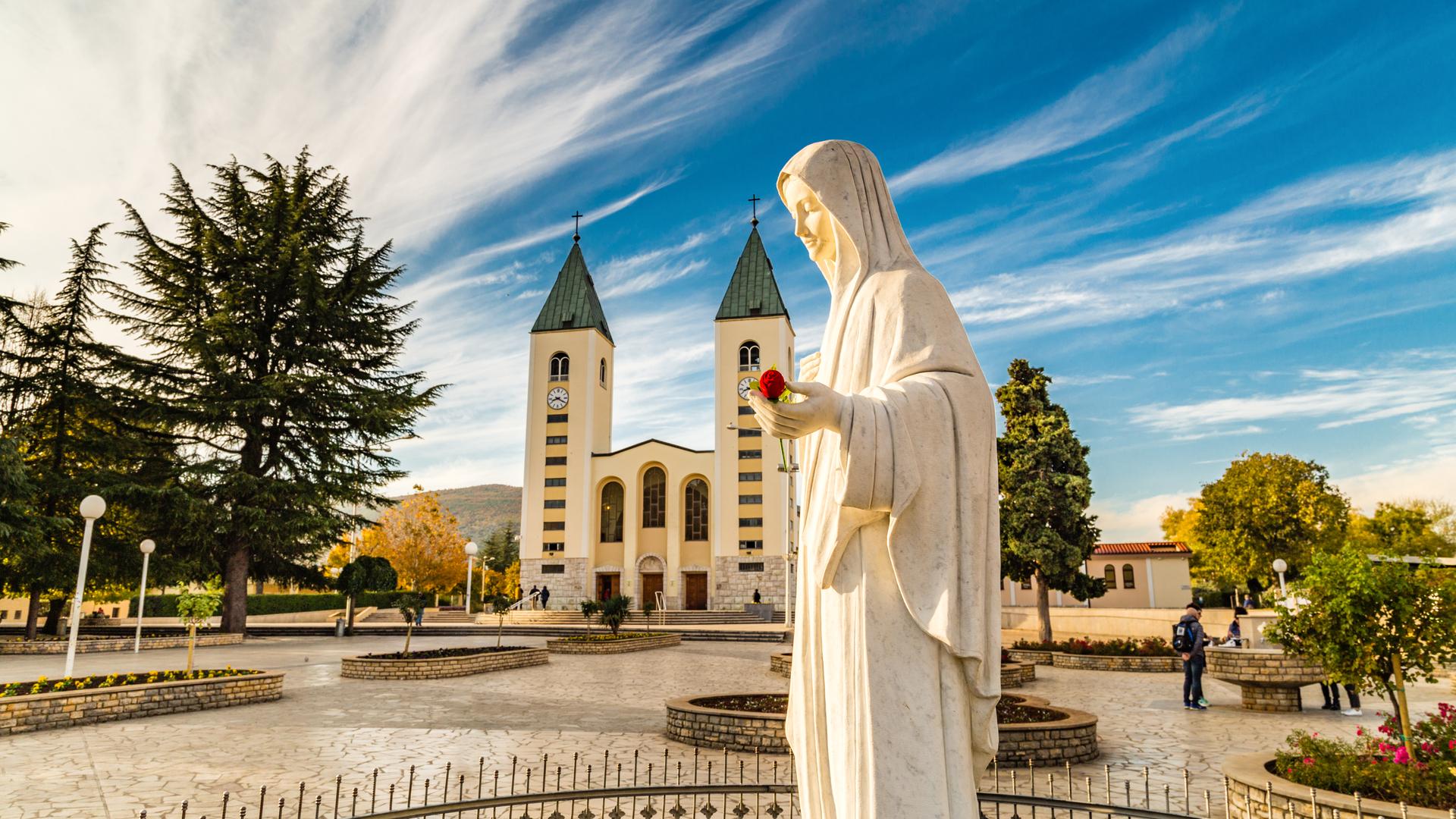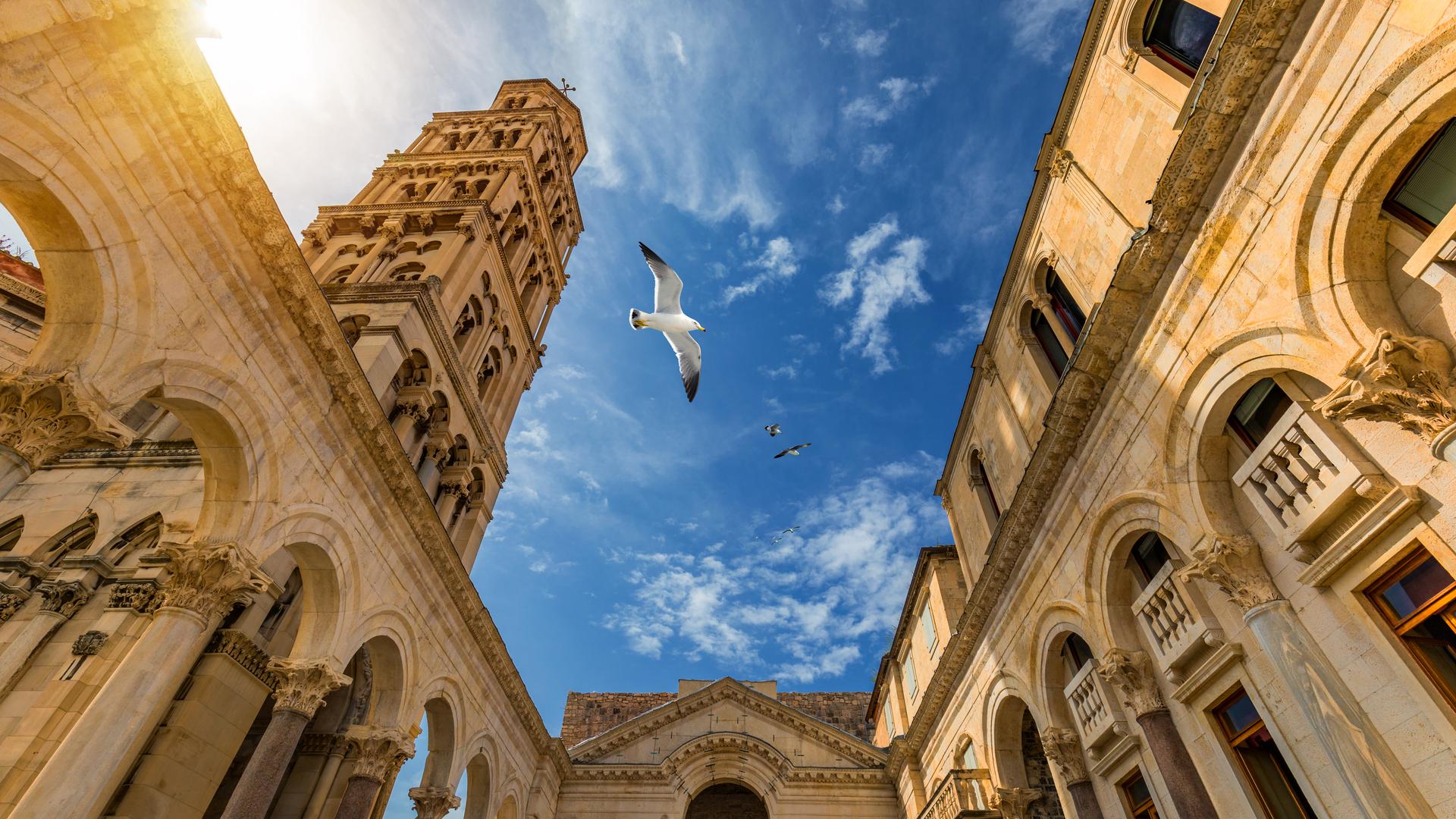Split - Međugorje - Sarajevo
Similar popular transfers:
Private transfer from Split to Sarajevo via Medjugorje
The best way to go and visit Sarajevo and Medjugorje is to book a private minivan transfer from Split to Sarajevo via Medjugorje.
MaciTours is a Croatian transfer service which offers the best prices for a minivan private transfer. MaciTours has at its disposal a fleet of luxurious and premium minivans that will make your transfer as comfortable as possible.
Sarajevo is located some 200km from Split and the duration of your transfer is 4 h.
While travelling from Split to Sarajevo, you may want to visit Medjugorje. If you want to visit the famous Medjugorje pilgrimage site, book a private Split to Sarajevo via Medjugorje transfer. Contact MaciTours for rates for this Croatian private transfer option.
The prices for a Split to Sarajevo via Medjugorje private transfer start at 350 euros (the price per vehicle, not per person).
How to get from Split to Sarajevo via Medjugorje?
It is very hard to get from Split to Sarajevo via Medjugorje without taking private transfer. First, what You will need to do is to take a bus from Split to Medjugorje. After that, You need to catch the bus to Sarajevo . When You pay both tickets, It will be almost same price as private transfer from Split to Sarajevo via Medjugorje . If You want to have reliable and comfortable transfer, only You need to do is to book private transfer from Split to Sarajevo via Medjugorje with MaciTours.
A few facts about Medjugorje
Medjugorje is s a town located in south-western Bosnia and Herzegovina, about 25km (16mi) southwest of Mostar and 20km (12mi) east of the border with Croatia.
The name Međugorje literally means "between mountains".
In the area of the cemetery in Miletina, structures from the Roman era stood, whose ruins have not yet been fully excavated.
Until 1878 part of the Ottoman Empire it became part of Austria-Hungary.
66 Catholic friars of the Franciscanorder were killed by the communists, mostly at the end of the war, including 30 friars at Siroki Brijeg near Medjugorje.
Since 1981, it has become a popular site of Catholic pilgrimagedue to Our Lady of Međugorje, an alleged series of apparitions of the Virgin Maryto six local childrenthat are still happening to this day.
"Most Blessed Virgin Mary", "Queen of Peace" and "Mother of God" are words the apparition has allegedly introduced herself with.
The Peace Rosary, also known as the Peace Chaplet of Medjugorje or Workers Chaplet, is recommended for regular prayer by Our Lady of Medjugorje. The Chaplet later became a basis for a prayer for the seven gifts of the Holy Spirit, known as the Chaplet in Honour of the Holy Spiritand translated into many languages.
The messages attributed to Our Lady of Medjugorje have a strong following among Catholics worldwide and Medjugorje has hence become one of the most popular pilgrimage sites for Catholics in the world and has turned into Europe's third most important apparition site, where each year more than 1 million people visit.
It has been estimated that 30 million pilgrims have come to Međugorje since the reputed apparitions began in 1981 and on May 12, 2019, the Vatican officially authorized pilgrimage to Medjugorje.
What to visit while in Medjugorje
While in Medjugorje, you can visit Saint James church and offer your prayer to the Virgin Mary, behind which stands a statue called Jesus leaving The Cross, a popular tourist attraction.
There are also organised pilgrimages to the Cross at Križevac hill, where the apparitions first took place in 1981.
These pilgrimages involve a lot of hiking, over steep terrain, but from the top of the Križevac hill you have a great view of the surrounding area.
There is also a statue of the Virgin Mary on top of the hill, where many people come to offer their prayers and seek healing.
A few facts about Sarajevo
Sarajevo is the capital and largest city of Bosnia and Herzegovina, located on the banks of the Miljacka River, within the greater Sarajevo valley and surrounded by the Dinaric Alps on all sides.
The name Sarajevo derives from the Turkish noun saray, meaning "palace" or "mansion", thereby making the name of Sarajevo, 'city of the palace."
Just as in virtually every other Bosnian town or city, here too East meets West and their traditions, beliefs, histories and architectures mix and combine in a rather unique way.
Sarajevo is the political, financial, social and cultural centre of Bosnia and Herzegovina and a prominent centre of culture in the Balkans, with region-wide influence in entertainment, media, fashion and the arts.
Sarajevo is sometimes called the "Jerusalem of Europe" or "Jerusalem of the Balkans", due to its long history of religious and cultural diversity.
It is one of only a few major European cities to have a mosque, Catholic church, Orthodox church and synagogue within the same neighbourhood.
Even though settlement in the area stretches back to prehistoric times, the modern city arose as an Ottoman stronghold in the 15th century.
In 1885, Sarajevo was the first city in Europe and the second city in the world to have a full-time electric tram network running through the city, following San Francisco.
In 1914, it was the site of the assassination of Archduke Franz Ferdinandby local Young Bosnia activist Gavrilo Princip that triggered World War I.
In the aftermath of World War II, the establishment of Socialist Yugoslavia led to a massive expansion of Sarajevo, then the constituent republic's capital, which culminated with the hosting of the 1984 Winter Olympics.
However, after the start of the Yugoslav Wars, for 1,425 days from April 1992 to February 1996, the city suffered the longest siege of a capital city in the history of modern warfare, during the Bosnian War and the breakup of Yugoslavia.
Sarajevo has been undergoing post-war reconstruction, and is the fastest growing city in Bosnia and Herzegovina.
What to see while in Sarajevo
Sarajevo is also famous for its city lookouts; including an observation deck on Avaz Twist Tower, Park Prinčeva restaurant, Vidikovac lookout on Mount Trebević, Zmajevac lookout and the Yellow/White fortresses lookouts in Vratnik, as well as numerous other rooftops throughout the city.
A symbol of Sarajevo is the Trebević cable car which was reconstructed in 2018 and is one of the most popular tourist attractions in the city taking visitors from the city centre to Mount Trebević.
Other popular destinations in Sarajevo include the Vrelo Bosne Park, the Sarajevo cathedral, and the Gazi Husrev-beg Mosque, the Emperor's Mosque and the Baščaršija, all of which are located in the Old City.
Stari Grad is characterized by its many religious structures, and examples of unique Bosnian architecture and it contains numerous hotelsand tourist attractions.
Sarajevo's old bazaar and the historical and cultural centre of the city. Baščaršija was built in the 15th century when Isa-Beg Isaković founded the city.
On the Baščaršija there are several important historic buildings, such as the Gazi Husrev-beg Mosqueand sahat-kula, the famous Sarajevo clock-tower.
Sarači Street is one of main pedestrian streets in Sarajevo, located in Baščaršija and in that street you can find numerous shops with traditional handicraft products, amid the Old City oriental scenery. The street is ideal when looking for souvenirs.
The Emperor's Mosquethe first mosque to be built in 1457, immediately after the Ottoman conquest of Bosnia. It is the largest single-subdome mosque in Bosnia and Herzegovina, built in the classical Ottoman style of the era and is dedicated it to the Sultan, Mehmed the Conqueror, the conqueror of Constantinople.
The Sacred Heart Cathedralis a Catholic church in Sarajevo and is commonly referred as the Sarajevo Cathedral. The church is largest cathedral in Bosnia and Herzegovina.
The National and University Library of Bosnia and Herzegovina is a national monument, dating to the 19th century and is built predominantly in the pseudo-Moorish expression, for which the stylistic sources were found in the Islamic part of Spain and North Africa.
Serbian shelling during the Siege of Sarajevo caused the complete destruction of the library and hence about 700 manuscripts and incunabulaand a unique collection of Bosnian serial publications have been lost. Its space has been be used for various protocol events for all levels of government, as well as for concerts and art exhibitions.
Itinerary
08:00 - Pickup and departure from your accommodation in Split,
10:30 - Explore Medjugorje, pilgrimage site,
13:00 - Our journey to Sarajevo from Medjugorje begins,
14:30 -- Stop for a lunch
17:00 - We arrive at your accommodation address in Sarajevo.
Transfer includes
• Pick up in Split and drop off in Sarajevo via Medjugorje (or vice versa)
• Comfortable air-conditioned vehicle
• Professional knowledgeable English speaking driver
• All cost related to the vehicle -- gas, parking, highway tolls
• All costs related to the drive
• Available Wi-Fi in the vehicle
• 0.5l bottle of water per passenger

